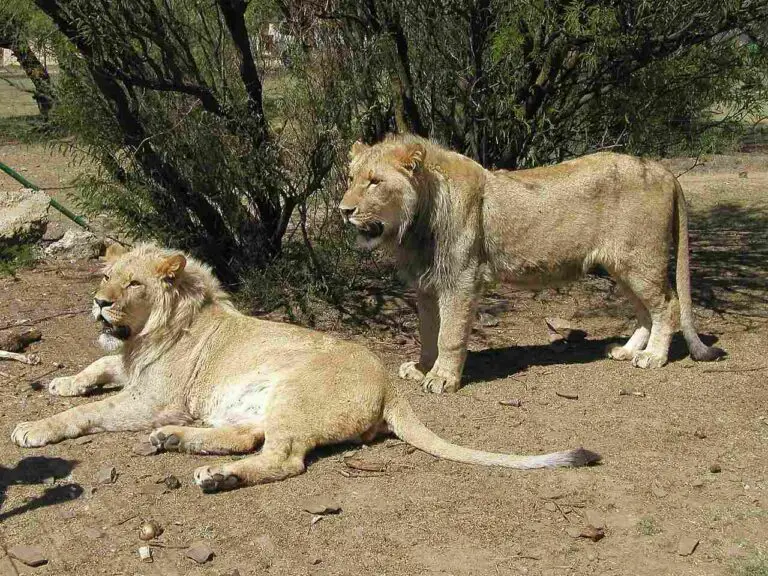5 Steps of the Carbon Cycle Process Explained
Steps of the carbon cycle process are; photosynthetic assimilation, biomass production (by autotrophic producers), biomass consumption (by heterotrophic consumers), organic biodegradation, and inorganic carbon release.
This article discusses steps of the carbon cycle process, as follows;
1). Photosynthetic Assimilation (as one of the Steps of the Carbon Cycle Process)
The first major step in the carbon cycle process is photosynthetic assimilation of carbon.
As the name implies, carbon assimilation has to do with capturing and incorporating carbon from one part or sphere of the environment, into another.
Most commonly, carbon is assimilated from the atmosphere where it occurs as part of the greenhouse gas carbon dioxide (CO2); into the biosphere where it becomes a part of organic cells, or a chemical component of biomass [4].
Two separate terms can be used when referring to the assimilation step or stage of the carbon cycle. These are; photosynthesis and carbon assimilation, respectively.
The terms can be used interchangeably in reference to the same step.
Photosynthesis is also called carbon assimilation because it includes some enzymatic reactions that utilize carbon in CO2 for the formation of organic cells. This explains why carbon occurs alongside hydrogen as a major elemental component of all organic matter.
Photosynthesis is the main process that drives carbon assimilation. Here, autotrophic organisms (also called Producers) like plants, capture solar energy and use it to facilitate photochemical reactions between water, carbon dioxide and other raw materials.
One of the key products of this is biomass, which is itself a relatively-complex organic compound with a large proportion of carbon.
There are multiple steps of carbon assimilation in photosynthesis. While these cannot be regarded as steps in the carbon cycle process itself, they are important to the completion of photochemical reactions in autotrophic cells.
The steps of carbon assimilation in photosynthesis are; carbon fixation, reduction, and regeneration. These steps collectively make up what is referred to the Calvin cycle, and they (the individual steps) can be referred to as dark reactions [11].
Photosynthetic assimilation of carbon is also essential to the food chain and energy pyramid of ecosystems. This is because it leads to the production of food and bioenergy that is passed from producers (autotrophs) to consumers (heterotrophs), across the various trophic levels.

2). Biomass Production
The production process of biomass is comprised of the dark reactions of photosynthesis, which namely are; carbon fixation, reduction, and regeneration.
Biomass is produced in the carbon cycle by photochemical reactions between carbon dioxide, water, and other chemical compounds involved in photosynthesis.
There are various ways in which biomass production in the carbon cycle can be evaluated.
From one perspective, biomass production can be considered an evidence of the assimilation of carbon in organic cells. The carbon found in biomass is derived from carbon dioxide captured during photosynthesis.
A different perspective views biomass production as a phase of transition of carbon from gaseous to solid and liquid forms, and from the atmosphere to the biosphere.
Biomass is part of the carbon cycle, and its immense importance can be traced to any of various factors, including the fact that biomass can be used as an energy resource [3].
The usability of biomass as an energy resource is discussed under renewable energy concepts like; biofuels and waste-to-energy development.
Energy in biomass is chemical stored energy which is derived by the transformation and accumulation of solar energy in organic cells. This energy is released through combustion of organic fuel in biopower plants, and may be used for heating and electricity generation [10]. Such application is one of several uses of the carbon cycle for anthropogenic purposes.
In ecology, biomass production is expressed and studied in terms of organic growth and development. Ecologic tools like the biomass pyramid are used to analyze the distribution of organic matter and carbon across the various trophic levels of ecosystems.
3). Biomass Consumption (as one of the Steps of the Carbon Cycle Process)
Biomass is very important to the carbon cycle, as a renewable medium in which carbon is stored.
The consumption of biomass is a broad concept that covers multiple mechanisms, all of which ultimately result in the breakdown of organic matter to release oxygenated, hydrated and carbonaceous products.
Like photosynthetic assimilation, biomass consumption is a step that reveals the link between carbon and oxygen cycles, based on organic matter-related dynamics.
The amount of biomass that is consumed in bioenergy production and electricity generation alone runs into hundreds of millions of tons. Most of this comes from energy crops like sugarcane and maize, which are often grown specifically to be used as fuel [8].
Bioenergy production consumes the most biomass on a per-unit basis, than any other entity or process on the Earth's surface. However it is not a natural process, and may be omitted from geochemical analyses of the carbon cycle.
Natural biomass consumption processes occur in the form of feeding, which may be observed as any of its variants across the food chain. Biomass consumption is carried out by heterotrophic organisms called consumers (primary, secondary or tertiary). It leads to growth and excretion, both of which are precedent of biodegradation or biomass decomposition.
As a result of its relatively-large carbon footprint, the use of biomass as a fuel has notable environmental impacts, among which are global warming and climate change [6].
Biomass contributes to climate change by decomposing in the presence of oxygen to yield significant quantity of carbon dioxide (CO2). This occurs most notably as combustion, which is fairly common because biomass is used as a source of renewable thermal energy [10].
Because it contains significant amount of stored carbon, biomass of all forms can be referred to as a carbon sink. It becomes a carbon source when it decomposes, so that significant amount of carbon is released as a byproduct of decomposition (thermal or biological).
This is the mechanism behind modern-day environmental issues involving increased carbon emission with increase in industrialization, deforestation and urbanization rates [1] [5].

4). Organic Biodegradation
Biodegradation is one of the steps of the carbon cycle process, because it involves the breakdown of carbon compounds that make up organic matter.
Also referred to as carbon degradation, the decomposition of carbon compounds in biomass is driven mainly by microorganisms, whose enzymatic activities cause organic matter to be transformed to inorganic compounds and elements that may accumulate as nutrients in soil and water.
Biodegradation can be explained in terms of the activities of these microbes. It signifies the transfer or transition of carbon from the biosphere to the atmosphere, lithosphere and hydrosphere.
Notable byproducts of organic biodegradation include carbon dioxide, whose release indicates the return of formerly-assimilated carbon, to the atmosphere.
The two types of biodegradation are aerobic and anaerobic biodegradation respectively, which differ in terms of the presence or absence of oxygen during the decomposition process.
Factors that affect biodegradation include; type of organic matter, temperature, pH, humidity, salinity, oxygen, microbe species, and microbial population-size.
Biodegradation has environmental importance because it leads to the release of carbon dioxide; a greenhouse gas, into the atmosphere. Anaerobic (oxygen-less) biodegradation also produces significant quantities of methane, which is generated in landfills and referred to as 'landfill gas'.
Biodegradation is used as a tool for mitigating the effects of environmental pollution, by using microbes to breakdown organic pollutants [2] like those from oil spill incidents. This is generally known as bioremediation.
With respect to marine pollution by plastics (that is; marine-plastic pollution), the manufacture of biodegradable plastics that can undergo biodegradation is seen as a means by which environmental degradation by the plastic industry can be mitigated [7] [9].
5). Inorganic Carbon Release (as one of the Steps of the Carbon Cycle Process)
Inorganic carbon release is a terminal step that represents the end on one full lifecycle of carbon.
Carbon is released in the form of CO2 from biomass as it breaks down, either through biological or thermal means.
All processes in the carbon cycle that release carbon, also release energy that is stored in organic molecules. These include natural and anthropogenic processes like biodegradation and fuel combustion respectively.
Conclusion
Steps in the carbon cycle process are;
1. Photosynthetic Assimilation
2. Biomass Production
3. Biomass Consumption
4. Organic Biodegradation
5. Inorganic Carbon Release
References
1). Choi, S. H.; Manousiouthakis, V. I. (2020). "On the carbon cycle impact of combustion of harvested plant biomass vs. fossil carbon resources." Computers & Chemical Engineering 140:106942. Available at: https://doi.org/10.1016/j.compchemeng.2020.106942. (Accessed 3 May 2023).
2). Gougoulias, C.; Clark, J. M.; Shaw, L. J. (2014). "The role of soil microbes in the global carbon cycle: tracking the below-ground microbial processing of plant-derived carbon for manipulating carbon dynamics in agricultural systems." J Sci Food Agric. 2014 Sep;94(12):2362-71. Available at: https://doi.org/10.1002/jsfa.6577. (Accessed 3 May 2023).
3). Green, C.; Byrne, K. A. (2004). "Biomass: Impact on Carbon Cycle and Greenhouse Gas Emissions." Available at: https://doi.org/10.1016/B0-12-176480-X/00418-6. (Accessed 3 May 2023).
4). Hall, D. O.; House, J. I. (1993). "Reducing atmospheric CO2 using biomass energy and photobiology." Energy Conversion and Management, Volume 34, Issues 9–11, September–November 1993, Pages 889-896. Available at: https://www.sciencedirect.com/science/article/abs/pii/0196890493900337. (Accessed 3 May 2023).
5). Houghton, R. A.; Hall, F. G.; Goetz, S. J. (2009). "Importance of biomass in the global carbon cycle." Journal of Geophysical Research Atmospheres 114(3):G00E03, Available at: https://doi.org/10.1029/2009JG000935. (Accessed 3 May 2023).
6). Ilari, A.; Duca, D.; Boakye-Yiadom, K. A.; Gasperini, T.; Toscano, G. (2022). "Carbon Footprint and Feedstock Quality of a Real Biomass Power Plant Fed with Forestry and Agricultural Residues." Resources, MDPI, vol. 11(2), pages 1-20, January. Available at:
7). Koller, M. (2019). "Switching from petro-plastics to microbial polyhydroxyalkanoates (PHA): the biotechnological escape route of choice out of the plastic predicament?" The EuroBiotech Journal 3(1):32-44. Available at: https://doi.org/10.2478/ebtj-2019-0004. (Accessed 3 May 2023).
8). Sertolli, A.; Gbanai, Z.; Lengyel, P.; Bai, A. (2022). "Biomass Potential and Utilization in Worldwide Research Trends—A Bibliometric Analysis." Sustainability 14(9):5515. Available at: https://doi.org/10.3390/su14095515. (Accessed 3 May 2023).
9). Suzuki, M.; Tachibana, Y.; Kasuya, K-I. (2020). "Biodegradability of poly(3-hydroxyalkanoate) and poly(ε- caprolactone) via biological carbon cycles in marine environments." Polymer Journal 53(1). Available at: https://doi.org/10.1038/s41428-020-00396-5. (Accessed 3 May 2023).
10). Tursi, A. (2019). "A review on biomass: Importance, chemistry, classification, and conversion." Biofuel Research Journal 6(2):962-979. Available at: https://doi.org/10.18331/BRJ2019.6.2.3. (Accessed 3 May 2023).
11). Yang, B.; Liu, J.; Ma, X.; Guo, B.; Liu, B.; Wu, T.; Jiang, Y.; Chen, F. (2017). "Genetic engineering of the Calvin cycle toward enhanced photosynthetic CO2 fixation in microalgae." Biotechnol Biofuels. 2017 Oct 5;10:229. Available at: https://doi.org/10.1186/s13068-017-0916-8. (Accessed 3 May 2023).




